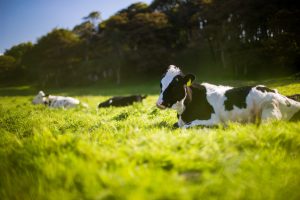-
Happy Holidays from AcceGen! Orders placed during Dec 22–Jan 2 will be processed and shipped after operations resume. Please plan ahead.
Featured Products
- In-Stock Tumor Cell Lines
- Human Orbital Fibroblasts
- Human Microglia
- Human Pulmonary Alveolar Epithelial Cells
- Human Colonic Fibroblasts
- Human Type II Alveolar Epithelial Cells
- Human Valvular Interstitial Cells
- Human Thyroid Epithelial Cells
- C57BL/6 Mouse Dermal Fibroblasts
- Human Alveolar Macrophages
- Human Dermal Fibroblasts, Adult
- Human Lung Fibroblasts, Adult
- Human Retinal Muller Cells
- Human Articular Chondrocytes
- Human Retinal Pigment Epithelial Cells
- Human Pancreatic Islets of Langerhans Cells
- Human Kidney Podocyte Cells
- Human Renal Proximal Tubule Cells
Primary Cells
Explore Products




 Bovine Muscle Satellite Cells are primary myogenic progenitor cells isolated from the longissimus muscle of calves (early passage, P0–P3). These spindle or polygonal-shaped, adherent cells are vital for muscle regeneration, becoming activated in response to injury and fusing into multinucleated fibers. They play a central role in postnatal muscle growth and are widely used in studies of muscular development, muscle-wasting diseases like Duchenne muscular dystrophy, regenerative medicine, and even lab-grown meat. These cells express crucial myogenic markers—Pax7, MyoD, and Myogenin, indicating their stem-like status and differentiation capacity. They are generally chromosomally stable at early passages, though long-term culture may alter this stability.
Bovine Muscle Satellite Cells are primary myogenic progenitor cells isolated from the longissimus muscle of calves (early passage, P0–P3). These spindle or polygonal-shaped, adherent cells are vital for muscle regeneration, becoming activated in response to injury and fusing into multinucleated fibers. They play a central role in postnatal muscle growth and are widely used in studies of muscular development, muscle-wasting diseases like Duchenne muscular dystrophy, regenerative medicine, and even lab-grown meat. These cells express crucial myogenic markers—Pax7, MyoD, and Myogenin, indicating their stem-like status and differentiation capacity. They are generally chromosomally stable at early passages, though long-term culture may alter this stability.